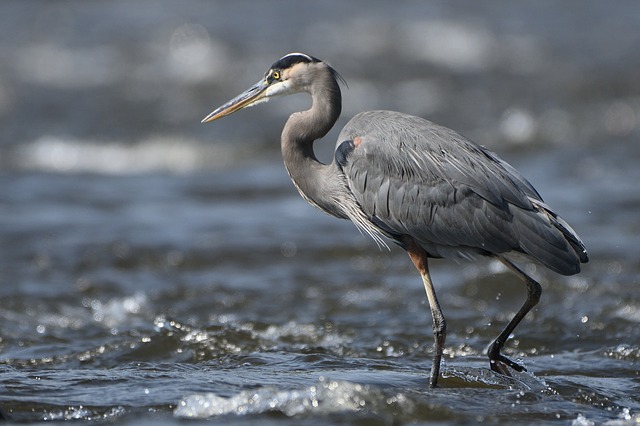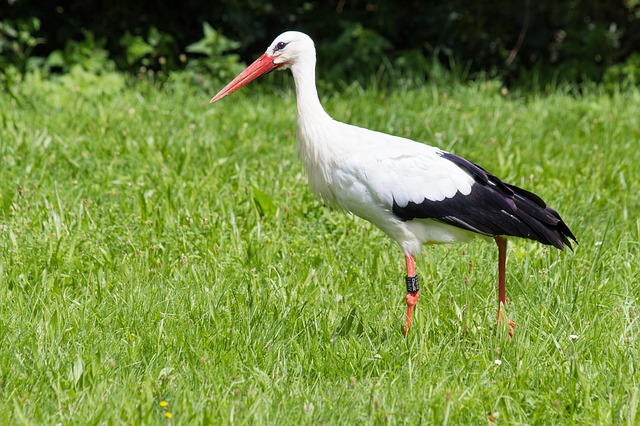
Crows are a common sight in many parts of the world. However, most of us don’t realize that these distinctive jet-black birds face a range of threats even when they are in our own backyards. The following are the main enemies of crows.
Natural Predators of Crows
One of the biggest dangers that crows face are natural predators. These are animals that have evolved to hunt and kill crows as part of their diet. Some of the most common crow predators include:
Hawks, Eagles, and Falcons
Birds of prey like hawks, eagles, and falcons are known for their sharp talons and keen eyesight making them formidable crow hunters. The peregrine falcon in particular is an expert bird hunter that often strikes and kills its prey in flight.
Owls
Nocturnal hunters like owls are an especially big threat to crows. Crows may be caught off guard by these silent nighttime hunters while roosting at night. And it is believed that one of the reasons crows roost in large numbers during the fall and winter months is for added protection against predation from owls.
Ravens
Ravens are often mistaken for crows. While they are closely related and look similar, ravens are bigger and stronger than their smaller crow cousins. They are one of the crows’ natural enemies as they raid crow nests, eating their eggs and young. Crows themselves are nest predators and are in turn a threat to the nests of ravens (and other birds of course).
Coyotes and Foxes
While it’s not a common occurrence every once in a while a coyote or fox may get lucky and surprise a crow on the ground. Or come across an injured crow. However, crows are incredibly wary birds and have the advantage of flight.
Snakes
Snakes are mainly a threat to a crow’s young. Tree-climbing snakes like rat snakes and black racers will climb up to nests eating any eggs or nestlings they find.
Human Threats to Crows
Humans are one of the most dangerous of all crow enemies since we are both a threat directly and indirectly. Some of the most common human threats are:
Hunting and Trapping
In many places, crows are considered to be a pest bird species. Hunting and trapping are used as a direct way to control their numbers and lessen any negative impact they may have on crops or the surrounding environment.
Poisoning
Crows are notorious for eating just about anything. And this can lead to them being poisoned. For example, if they consume foods that have been exposed to pesticides like crops or insects. Crows may also eat dead animals such as rodents that have been poisoned themselves which can be fatal. Contaminated water, pollution, and pesticides sprayed in their habitat can also be deadly for crows.
Habitat Destruction
Like almost all other animal species on the planet, crows can be negatively impacted by habitat loss. This makes it not only harder for them to find food but also a territory where they can mate and safely raise their young.
Vehicle Collisions
One of the most overlooked enemies of crows are actually vehicles. Crows are smart birds and they will regularly fly along roads looking for easy meals such as roadkill and trash. However, when they are occupied by eating or there is limited visibility they may not have time to take off in time to avoid oncoming vehicles and are killed or seriously injured.
How Have Crows Adapted To These Threats?
Crows are well-known for being extremely adaptable. And despite all of these threats, they have evolved a range of behaviors to help them deal with their enemies and stay alive as long as possible. For example:
Group Defense
Crows live in family groups. And when there is a potential threat the entire group may attack. They are known for mobbing, divebombing, calling loudly, and even physically attacking to drive their enemies away. Crows can be particularly aggressive during the nesting season and may even attack humans.
Nest Placement
To make things harder for predators, crows are selective about where they build their nests. They like locations that are high up and difficult for predators to reach. Utility poles and tree tops are particular favorites.
Food Caching
Crows hide their extra food for times when resources are scarce. However, they don’t put it all in one spot. That would make it easier for them to be ambushed once a predator realized where their cache was. And also for competitors to steal it all at once. So instead they hide their food in a range of different locations.
Vocalizations and Alarm Calls
As anyone who has experienced crows knows, they can be very loud. These birds have a range of calls they use to communicate information with each other including danger. In fact, they will place sentinels high up above them to keep watch while the rest of the group is feeding on the ground. And when any enemies of crows are spotted the sentinel can sound the alarm and the feeding crows can quickly escape.
Start Shopping for Birding Supplies!
Raccoon Pictures
Raccoons are easily recognizable by their black face mask and ringed tail. And there are many fascinating things about this intelligent nocturnal species. So we’ve compiled some of the best raccoon pictures to show you just how amazing and unique they are. Raccoon...
Eagle Pictures
Eagles are large powerful raptors with sharp talons and beaks. These apex predators are typically at top of the food chain and there are many interesting things about them. So we’ve compiled some of the best eagle pictures to show you just how amazing they are. Bald...
Nutria Pictures
Nutria are large semi-aquatic rodents from South America. In the United States where they were originally imported for the fur industry, they are an invasive species. Despite their pest status, there are many interesting things about them. So here are some of the best...
Stork Pictures
Storks are tall wading birds with long legs and necks. These amazing birds have many fascinating things about them. And we’ve compiled some of the top stork pictures to help show you just how interesting and beautiful they are. White Stork The white stork has a body...
Alligator Pictures
The American alligator is a large predatory reptile that inhabits the southeastern United States. It’s a fascinating animal with many interesting things about it. And we’ve collected some of the best alligator pictures to help show you just how amazing they are....
How Long Do Great Blue Herons Live?
The life expectancy of birds is known to be closely related to their size. So as the biggest heron species in North America, how long do great blue herons live? The average life expectancy for these large birds is around fifteen years. However, surviving their first...
Where Do Great Blue Herons Live?
The great blue heron is considered to be the most widespread heron in North America. So exactly where do great blue herons live? Here’s what you’ll want to know. Great Blue Heron Range The great blue heron is found throughout most of the North American continent. In...
Where Do Great Blue Herons Nest?
While many of us have seen great blue herons their nesting habits often remain a mystery to most people. That’s because they purposely nest in hard-to-reach places. So where do great blue herons nest? Here’s the answer. A Colony Nester Typically great blue herons nest...
Do Great Blue Herons Migrate?
Do great blue herons migrate? This is something many people wonder about, especially if they’ve seen a heron during the cold winter months. And the answer is both yes and no. Here’s what you’ll want to know. Great Blue Heron Range The great blue heron has a large...
Great Blue Heron Pictures
Few species of birds are as tall, elegant, and attractive as the great blue heron. So we’ve compiled some of the best great blue heron pictures for you to admire and help you to learn more about this amazing bird! Great Blue Heron Head The head of the great blue heron...
What Do Snapping Turtles Eat?
Many people are familiar with the fact that snapping turtles have an incredibly strong bite. They use their strong jaws and sharp beak not just for defense but also for catching food. So what do snapping turtles eat? Here's what you'll want to know. Snapping turtles...
Birds That Look Like Egrets
Egrets are predatory birds that hunt and live in a range of both freshwater and saltwater habitats. These birds are usually white, and have S-shaped necks, long legs, and dagger-like beaks. However, they are often mistaken for several other types of birds that look...
Birds That Look Like Storks
Storks are large wading birds with robust bills and long legs. These tall carnivorous birds are well-known for their wide wingspans and also for building huge nests. However, they are often confused with several other bird types that have a similar appearance. So...
Birds That Look Like Herons
Herons are tall birds with long slender legs and necks. And they often wade in the water when hunting for food. Yet there are several other types of birds that may be mistaken for them. To make things more confusing many of these birds also spend time in the water and...
Great Blue Heron Facts
The great blue heron is named for its size and the grey-blue color on its wings, stomach, and back. This species has many fascinating things about it. So here are the top great blue heron facts. It's The Largest North American Heron The great blue heron is a big bird...
Are There White Herons?
Are there white herons? This is something many people wonder especially after seeing a tall all-white bird. The answer is yes! And here’s a fast introduction to them. A White Color Morph Most people are familiar with the great blue heron, a large predatory and...
Great White Heron Facts
While many people are familiar with the great blue heron, they are often surprised to find out that there’s also a great white heron. There are many things you’ll want to know about this stunning bird. So here are the top great white heron facts. The Great White Heron...
What Animals Eat Herons?
Because of their size and long sharp beaks, it can be hard to imagine that herons have any natural predators. While they do, they definitely don’t have nearly as many predators as most other types of birds. So what animals eat herons? Predators Of Adult Herons For...
What Do Herons Eat?
Great blue herons are often seen slowly wading in shallow water hunting for food. You may have even spotted one of these large birds in your own backyard pond. This leaves many people wondering: “What do great blue herons eat?” And here’s everything you’ll need to...
What Do Green Herons Eat?
The green heron is a secretive and small heron species. What it lacks in size however it makes up for in intelligence. It is particularly well-known for how it uses its smarts when hunting for food. So what do green herons eat? Read on to find out. Meet The Green...




















